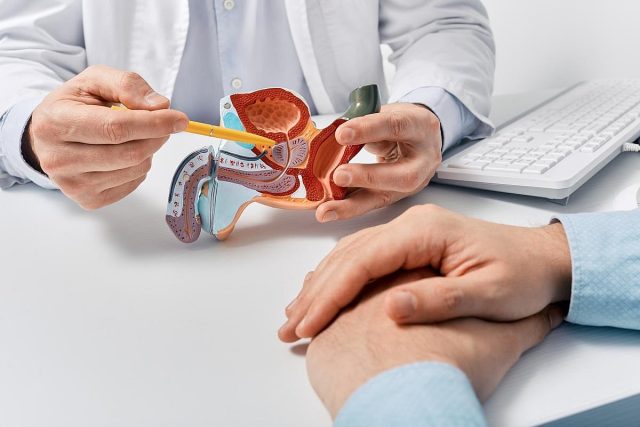Patient-reported outcomes appear to be similar to postoperative conventionally fractionated radiotherapy
By Elana Gotkine HealthDay Reporter
TUESDAY, May 20, 2025 (HealthDay News) — Post-radical prostatectomy (post-RP) stereotactic body radiotherapy (SBRT) is well tolerated, with patient-reported outcomes (PROs) comparable to those seen after postoperative conventionally fractionated radiotherapy (CFRT) for prostate cancer, according to a study published online May 15 in JAMA Oncology.
John Nikitas, M.D., from the University of California, Los Angeles, and colleagues examined physician-reported late toxic effects and two-year PROs following post-RP SBRT in a phase 2, single-arm trial. One hundred men with post-RP prostate-specific antigen greater than 0.03 ng/mL or adverse pathologic features were treated with post-RP SBRT and followed for a median of 43 months. The longitudinal PROs for men receiving SBRT were compared to those of 200 men receiving postoperative CFRT.
The researchers found that the cumulative incidence of late grade 2 and 3 genitourinary toxic effects and gastrointestinal tract toxic effects was 25 and 4 percent and 3 and 3 percent, respectively. Overall, 38.9, 17.9, and 34.1 percent of patients had decrements of more than twofold the minimal clinically important difference (MCID) in PROs for urinary incontinence, urinary irritation, and bowel function, respectively. The adjusted odds ratios for patients receiving SBRT experiencing decrements more than twofold the MCID were not significant when compared with the CFRT cohort for urinary incontinence, urinary irritation, and bowel function.
“There was no measurably different decline in urinary, bowel, or sexual function through two years compared with a cohort of patients treated using CFRT,” the authors write.
Several authors disclosed ties to the biopharmaceutical industry.
Editorial (subscription or payment may be required)
Copyright © 2025 HealthDay. All rights reserved.



















